Tires are just as crucial as the engine when it comes to maintaining your car’s safety and performance. At some point, however, tires wear out and this compromises the car’s efficiency, especially in traction and braking ability which can potentially lead to fatal road accidents.
If any of your tires exhibit a pattern of excessive wear, it’s about time you change them. Changing tires involves taking off the rubber tread that is tucked inside the wheel’s rim, a grunt work that many would rather pass and hand to a mechanic.
But what if we tell you, popping the bead out of the rim is not too much of a mundane job if you are armed with the in-depth information on how to do so. Doing your own tires will save you a lot of money from costly repairs that should be otherwise spent wisely spent on other car-related maintenance.
With few hand tools and tricks, you can remove the bead off the rim yourself. But the easiest and quickest way to do it is by using a tire-changing machine. This article will cover both of these methods.
Prying the tire loose from the rim might sound intimidating especially if you are a novice or new to tire maintenance. But you don’t really have to be an auto mechanic or expert to do the task. All you need is the right tools, basic mechanic skills, and know-how. The following is an easy guide to carry out the goal.
What you will need:
● Lubricant (Alternative: liquid dish soap or oil)
● Crowbar, Prybar, Tire Levers, Tire iron (any of these)
● Presta or Schnader or any Valve Core Removal Tool (Alternative: Pliers)
● Screwdriver
● To break the bead manually, you need either one of these things: a Jack, a Knife or any other sharp cutting tool, a vehicle
● Optional: Tire Bead Breaker, Tape
The Procedure:
 The air cap or valve core is a small pressure sealing device made of either rubber or metal cylinder located on the core which is where the tire is inflated from. You will need a Schrader or Presta valve tool to extract the air cap from the rim.
The air cap or valve core is a small pressure sealing device made of either rubber or metal cylinder located on the core which is where the tire is inflated from. You will need a Schrader or Presta valve tool to extract the air cap from the rim.Thread the tool inside the valve stem and twist it in a counterclockwise direction. This should loosen and remove the cap off the tire. Then release and allow the air to exhaust.
A valve core removal tool is a small metal that resembles a small screwdriver. It is a handy tool that is relatively inexpensive and often available in a set for different valve sizes like that of the Awpeye 4 Pack Valve Core Remover Tool.
 There are three methods and tricks you can use to break the bead bundle between the bead and the rim.
There are three methods and tricks you can use to break the bead bundle between the bead and the rim.● Drive and run over the tire you are working on. The aim is to force the rubber down so its easier for the bead to pop out. Hence when driving your vehicle over the tire, make sure that it is the rubber part you are driving onto and not the metal rim. You may need to run the car over it a few times to break the rubber part.
● Put the whole weight of the vehicle on the tire via suspension. The method involves raising the vehicle using a jack and partially lowering it. Once the vehicle is lifted, place the tire underneath the jack. Adjust the jack and lower the vehicle onto the bead part of the tire. Warning: Do not attempt this method if you are new to the process of car suspension unless there is an expert or professional supervision. The procedure requires lifting a car and working underneath it which is can be really dangerous to you and to your vehicle especially if you don’t know what you are doing.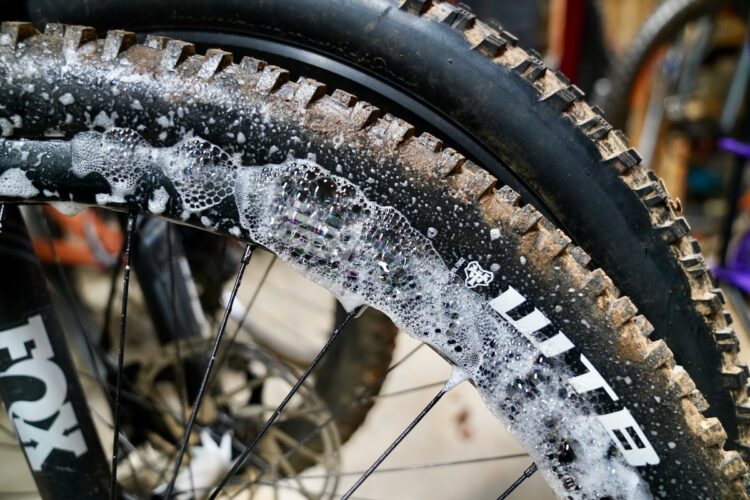
● Cut the bead off the rim. You can cut through with it using a saw blade or a drywall knife. To cut it, follow the seam running alongside the bead, carefully not touching the metal rim. Be cautious as you cut because you don’t want to damage the metal rim To avoid the blade veering towards the tread, insert a wooden towel in the sections that are already cut.
If you are really having a hard time with the bead, you can easily get away with a bead breaker tool. A tire bead breaker is a handy tool designed to dismount the innermost diameter of the tire interfacing the wheel. The operation is so fast and easy it’s basically like opening a canned good! It’s also the safest way to de-bead without damaging the rim. To make the most of your purchase, invest in a well-designed bead breaker like that of BeadBuster XB-450. To date, this is the most affordable and efficient bead breaker.
 Once you have managed to break the bead, grease the edge around the rim as well as the bead by applying the lubricant. This will prep the area when prying the tire later on. You will find it easier to pop the bead off the lip of the rim easily once everything is lubricated. Use as much as a lubricant as necessary. To avoid accidentally scratching the metal easily while prying, you can also tape the edge of the rim prior to lubrication.
Once you have managed to break the bead, grease the edge around the rim as well as the bead by applying the lubricant. This will prep the area when prying the tire later on. You will find it easier to pop the bead off the lip of the rim easily once everything is lubricated. Use as much as a lubricant as necessary. To avoid accidentally scratching the metal easily while prying, you can also tape the edge of the rim prior to lubrication.  At this point, it is only the bottom half that is loosened, you still have to work on the other half of the tire. So to do this, flip the wheel over on the other side and pry in the wheel off in the same fashion as you were prying in step 4. Use as many pry and screwdriver alongside lubricant as necessary.
At this point, it is only the bottom half that is loosened, you still have to work on the other half of the tire. So to do this, flip the wheel over on the other side and pry in the wheel off in the same fashion as you were prying in step 4. Use as many pry and screwdriver alongside lubricant as necessary.
If you find taking a tire off a rim by hands too much of a task, time to pull out the big weapon. A tire changing machine skips most of the lengthy process of manually separating the tire from the rim.
Note that the tire changing machine we are referring to differs from that of the actual heavy-duty tire changing equipment technicians used in the shop. The manual tire changing machine is a rather portable and handy tool that requires no power hookups to operate. While the machine will mostly do the job, you will still need the help of a few hand tools.
The manual tire changing machine is a rather portable and handy tool that requires no power hookups to operate. While the machine will mostly do the job, you will still need the help of a few hand tools.
What you will need:
● Plywood Board (Alternative: any strong wood surface that is at least ¾ inches thick)
● Manual Tire Changing Machine
● Tire Changing Rod (Alternative: any metal rod or tube with a pointed tip)
● Screwdriver
● Bolts (preferably 5 inches long and ½ inch wide)
● Presta or Schnader or any Valve Core Removal Tool (Alternative: Pliers)
● Marker or Pencil
● Lubricant (Alternative: liquid dish soap or oil)
● Optional: rug or paper
The Procedure:
 Using a marker, trace the machine’s base on the platform. Do put a mark on the holes or the location of the bolt as well.
Using a marker, trace the machine’s base on the platform. Do put a mark on the holes or the location of the bolt as well.Some prefer a block of concrete as a base because they are sturdier and stable. Others drill the machine directly on the floor. But note that you will need a mason drill to engage the bolts into hard cement. Nonetheless, the bolting process is the same as with the wood material.

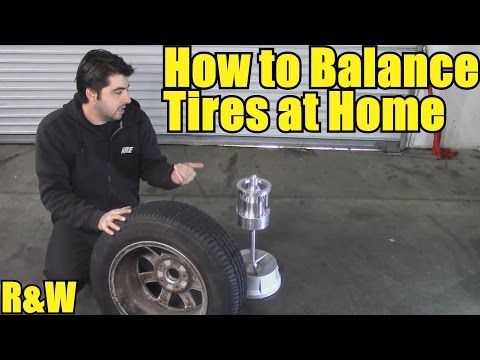 You will use it to expose the rim of the tire. Start the process by sticking the rod’s pointed end into the rim-tire joint. Using your hand or your foot, apply pressure on the wedge by pushing it down. This will gradually exposed the rim.
You will use it to expose the rim of the tire. Start the process by sticking the rod’s pointed end into the rim-tire joint. Using your hand or your foot, apply pressure on the wedge by pushing it down. This will gradually exposed the rim. To avoid scratches on the rim while inserting the rim, you can wrap a rug or any cloth (a paper may do) around the spoke.
To avoid scratches on the rim while inserting the rim, you can wrap a rug or any cloth (a paper may do) around the spoke. Apply generous amount lubrication as necessary.
Apply generous amount lubrication as necessary.You may not be able to pry a certain section in one shot and that is fine. If this happens, simply go back by lifting the foot pedal using your foot to turn the rod counterclockwise.
Related video:

This article has thoroughly discussed the process of disengaging the tire from the rim and now it’s your turn to take the wheel. Sure, the entire process of changing your own tire– from removing the wheel of the vehicle to fitting new tires might seem lengthy and complicated but hey at least we have taken down one of its processes, namely removing the tire off the wheel. Doing your own tires will save you money and soon enough, you will be reaping the satisfying feeling of your hard work.
Over time and with frequent use, even the best tires will wear out. When your tires wear out, it’s best to change them as soon as possible, as worn-out tires reduce the vehicle’s efficiency in braking, increasing the chances of an accident.
Of course, to change a tire, you must remove it from its rim (or wheel). Removing a tire from the wheel is relatively easy and does not require highly specialized skills or equipment. It can be done manually, by hand or with a manual tire changing machine.
Removing a tire from the rim is a relatively straight forward process:
Here’s what you’ll need to remove a tire from a rim:
Place the tire on the ground or any level surface, and locate the air valve—a small rubber or metallic device. The valve has a cap, which you will need to take off (by twisting anti-clockwise) to reveal the valve core inside. The core is a metal cylinder in the valve, by which the tube in tire gets inflated, and removing it releases the air in the tire.
The core is a metal cylinder in the valve, by which the tube in tire gets inflated, and removing it releases the air in the tire.
You will need to use a core removal tool to remove the core from the valve. The tool is similar to a small screwdriver; you put the end into the valve and again twist anti-clockwise to let out the air. The tools are inexpensive and are available in auto stores and online.
The bead is the edge of the tire attached to the rim. When the tire’s air pressure is sufficient, it keeps the bead firmly attached to the rim. Therefore, deflating the tire and with the application of force, you can separate the bead from the wheel and remove the tire.
There are several ways to remove the bead after deflating the tire. Some of these methods include:

This method is perhaps one of the simplest ways to disengage the bead from the rim without using any additional tools. Set the tire on the ground and drive over the tire. Doing so forces the edge down and out of the groove.
Sometimes you may need to repeat the process a few times before the bead breaks. However, take care to drive only on the rubber and not the metal, which may damage the rim.
Lowering a vehicle over the tire is another relatively simple way to break the bead. It involves raising the car with a jack and then pushing part of the tire under the vehicle. The car gets lowered, resting on the rubber right next to the metal wheel, consequently pushing the edge of the tire out of its groove.
However, do not attempt this method if you do not fully understand how to jack a car, as there are some technicalities involved.
You can also cut through particularly tough beads using a sharp knife. However, cutting through will cause largely irreparable damage to the tire. To cut, lay the tire flat on the ground, and saw along a section nearest to the edge, taking care not to veer toward the metal wheel to avoid damaging it.
However, cutting through will cause largely irreparable damage to the tire. To cut, lay the tire flat on the ground, and saw along a section nearest to the edge, taking care not to veer toward the metal wheel to avoid damaging it.
As the name suggests, a tire bead breaker is a tool designed to detach the tire from the wheel. This tool is the easiest way to detach the bead without damaging the rim.
You may use any available lubricant such as oil or dish soap, applying generous amounts around the edges of the rim and tire. Ensure that the lubricant gets under the rim too. The purpose of lubricating is to make it easier to pull out the tire over the rim’s edge.
Having lubricated the wheel and tire edge, use your feet to press down on the rubber, creating an opening. Carefully push the pry bar into the newly created opening, and lift the tire up and over the edge of the rim.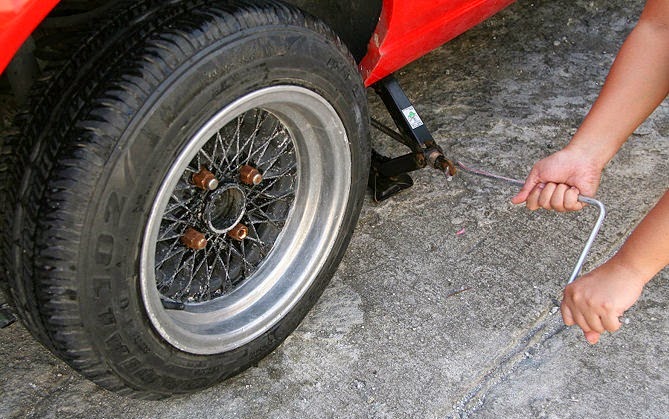
Hold the pry bar in place, and insert the flat-head screwdriver next to it, using the screwdriver to pull out the edge over the entire circumference of the wheel. Flatter pry bars and screwdrivers work best for this task.
After successfully extracting the bead, you will need to do the same thing on the other side. Start by applying generous amounts of lubricant to the edge of the rim and bead, again ensuring that the lubricant gets under the rim.
Like before, press down the tire and insert a pry bar into the opening, lifting the tire over the rim’s edge. Again use the screwdriver to pry the tire out on all sections. At this point, the tire should be entirely free of the wheel, and you can easily lift it from the tire.
While removing the tire from a rim by hand is not an overly complex procedure, it is a rather hands-on process, and not everyone prefers this method.
One other way to remove the tire from the rim without going to the mechanic is to use a manual tire changing machine.
This compact machine allows you to skip the greater part of the tedious process of separating the wheel from tire, and is manually operated, unlike those found in a mechanic’s shop. Manual tire changers are cheap and available in stores and online. The machine also comes in handy if you don’t know how to put a tire on a rim by hand.
In addition to the machine, you will need:
Place the machine over the plywood board and use a pencil or pen to trace the outline onto the board, indicating the bolt positions. You may use boards other than plywood, just ensure that it is of sufficient thickness (at least ¾ inches).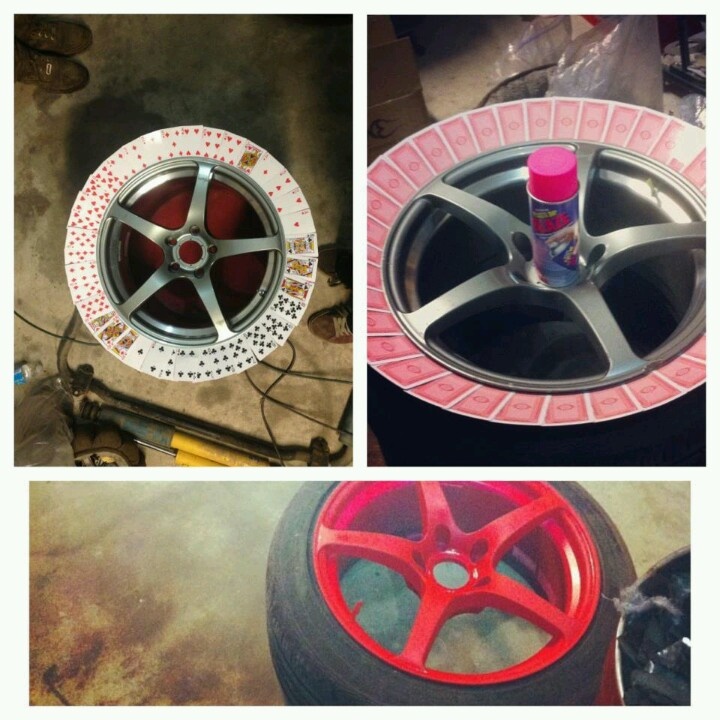
Screw the bolts into the wood, at points marked for holes. Using 5 inch long bolts with ½-inch diameter works best for this.
Flip the wood over and position the machine over the bolts, securing each bolt with a nut and washer.
An alternative to wood is to bolt the machine to a concrete floor. This option affords greater stability, but it is more tedious to achieve, as it requires the use of a masonry drill.
Locate the air valve on the side of the tire, removing the cap to expose the core within. Insert the core extraction tool into the valve and twist counterclockwise to deflate the tire.
Set the now deflated tire and rim on tire changing machine. Ensure that you hook the rim to the small triangular-shaped nub at the base, and that the front of the wheel faces upward. Next, drop the machine’s arm onto the rubber at the edge of the rim. The arm resting on the rubber is wedge-like, to fit between the metal wheel and the rubber.
Next, drop the machine’s arm onto the rubber at the edge of the rim. The arm resting on the rubber is wedge-like, to fit between the metal wheel and the rubber.
Typical tire changing machines come with a changing rod to help in removing the tire. However, any metallic rod with a pointed end will suffice. Insert the changing rod into the open end of the arm, and slowly apply pressure; this will cause the arm to press down on the rubber and reveal the wheel.
Rotate the tire, pressing down the tire changer arm on all points along the edge of the rim. Afterward, flip the tire and repeat the process to break the bead on the other side.
Set the tire over the machine’s top by sliding it over the central tube connected to the machine arm. Next to the central tube is a smaller spoke that should pass through one of the rim’s lug nut holes.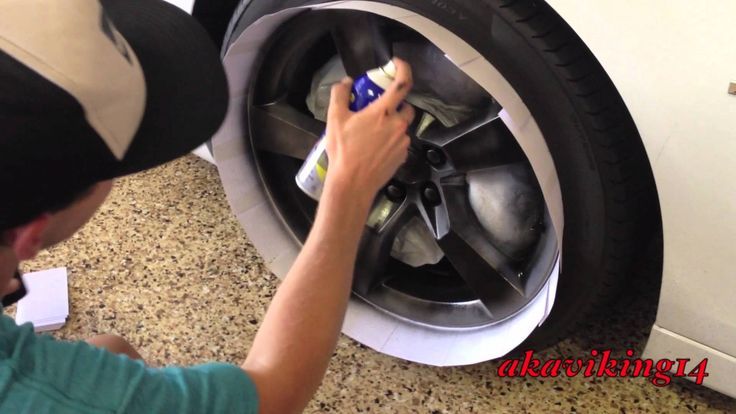
Place the bracket piece, which is a large ring with four spokes attached. The spokes prevent the tire from tilting or turning when you start to pull the bead over the rim. Finally, place the cap over the bracket piece and twist clockwise to secure the tire firmly.
Before you attempt to remove a tire, apply generous amounts of lubricant to the edge of the wheel and adjoining rubber, ensuring that the lubricant gets under the rim as well.
Gently push the pointed end of the changing rod between the rubber and the rim, then lift the bead over the rim’s edge. Slide the rod along the circumference of the rim, using the central tube as leverage.
When all the tire sections are free from the wheel, push the rod down to the bottom of the tire and repeat the process to free the tire on the other face of the wheel.
You can remove a tire from a rim either by hand or using a manual tire changing machine. Hand removal can be tedious and requires screwdrivers, pry bars, lubricants and a core removal tool. You will need the same set of tools when using the changing machine for removing the tire.
Hand removal can be tedious and requires screwdrivers, pry bars, lubricants and a core removal tool. You will need the same set of tools when using the changing machine for removing the tire.
The manual changing machine also comes in handy if you do not know how to put tire on rim by hand.
Whichever way you choose, the processes of removing a tire from a rim are fairly simple and easy to follow.
Many car owners prefer to overboard a car only themselves, not trusting the service masters, as there are times when a car tire “sticks”, and an incompetent car mechanic can simply ruin the tires of the car. Therefore, it is worth remembering how to bead the wheels on your own, then you can be 100% sure of the success of the disassembly.
Wheel beading is a complex process. Experts give a number of recommendations on how to disassemble the car's wheels yourself:
Self-disassembly of a wheel
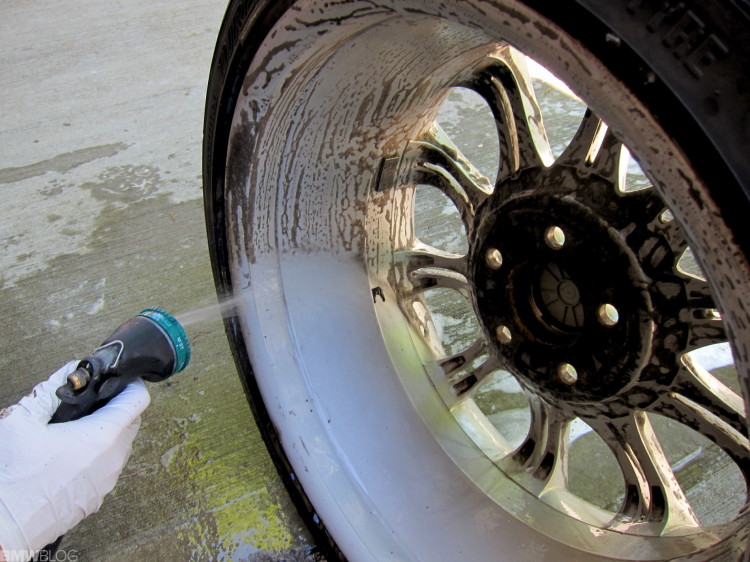 Often it is expensive: but you should not change a winter tire for an all-season one. And there is no summer for winter either.
Often it is expensive: but you should not change a winter tire for an all-season one. And there is no summer for winter either. Note!
If the wheel was damaged on the way and began to lose pressure, experts recommend not to get the unfortunate nail or screw.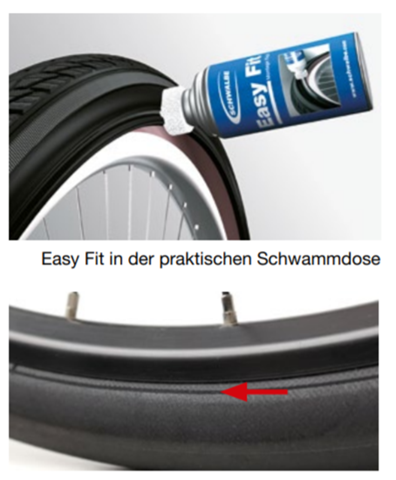 The item will hold back part of the pressure in the tire of the car, and this will make it possible to get to the garage or car service, where the craftsmen know exactly how to disassemble the wheel of the car.
The item will hold back part of the pressure in the tire of the car, and this will make it possible to get to the garage or car service, where the craftsmen know exactly how to disassemble the wheel of the car.
Mounting spatula
Wheel beading requires certain "handy tools", time and effort. Many, most likely, have observed how newcomers to driving a car try to remove a “sticky” tire from the rim of the wheel by beating a hammer on a screwdriver. This is a mistake and it is forbidden to do so. Even if initially “injuries” on the tire will not be visible, after a certain period they will “remind” of themselves.
Get the right solvent or turpentine,
White spirit can also be used. It is necessary to process the product in the “welding” area and after 120 seconds have passed, the tire will easily move away from the car rim. After that, it is important to walk around the treatment area with a dry cloth.
Do-it-yourself wheel dismantling is carried out using the following tools:
In order for the wheel to be disassembled without problems, it is necessary to remove it from the car. Next, using a steel corner, you need to remove the tire from the rim: for this, the corner is driven between the rim and the rubber and efforts are made.
Wheel beading starts from the side opposite the spool. The tire is going down. The end of the device should be properly rounded for comfortable removal of the rubber and so as not to damage the tire.
Tip!
It is important to take care not to damage the rubber part, it is necessary to carefully remove it from the rim, slightly pressing on the carcass.
Only after turning the entire surface of the side of the tire onto the outside of the rim can the inner tube be carefully removed. Here's how to rim the wheels. The assembly is performed in the same way, but reversely to the disassembly.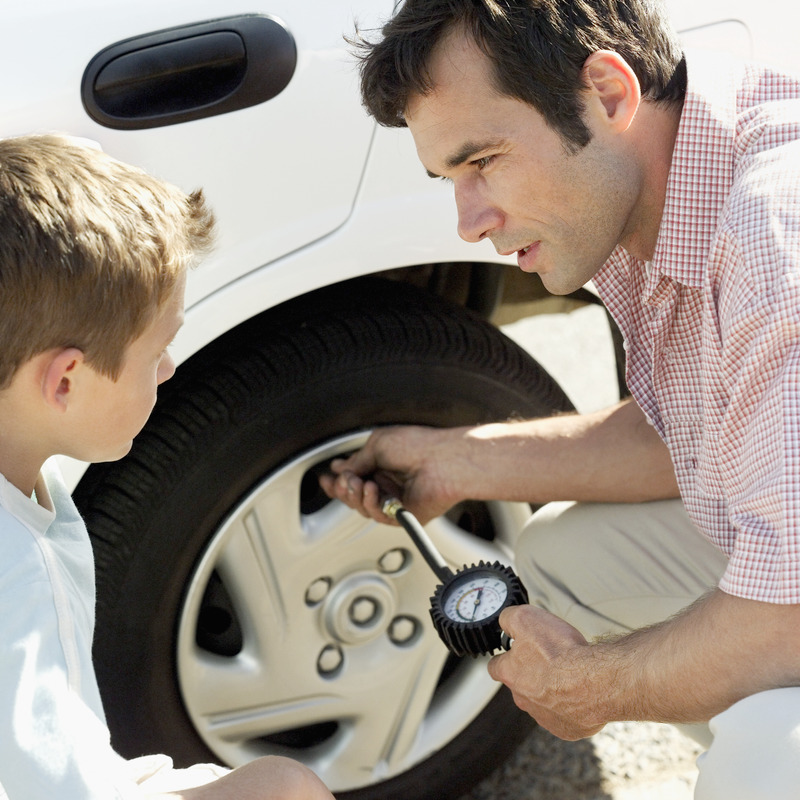
Tire edge lubrication
Once you learn how to strip a wheel, you won't have any problems later on. As with any renovation, you need to prepare first. The “duty” tool the driver must always carry with him. There are no special devices, but this does not mean that only a hammer with a mount is enough - car owners use these tools to disassemble wheel tires. It will not bring anything other than damage to the wheel, and it threatens with problems on the road. Therefore, answering the question of whether the rubber deteriorates from overboarding, one can answer that the result depends on the correctness of the repair.
Attention!
After carrying out all operations, dry the place on the rubber, eliminating all wet areas. Disassembly of wheels homemade devices usually does not imply. A jack is used from the toolkit, you will also need wrenches, special blades for installation, a steel corner.
Finding the spool
The initial and significant step towards the successful removal of tires from a rim on your own is knowing the instructions.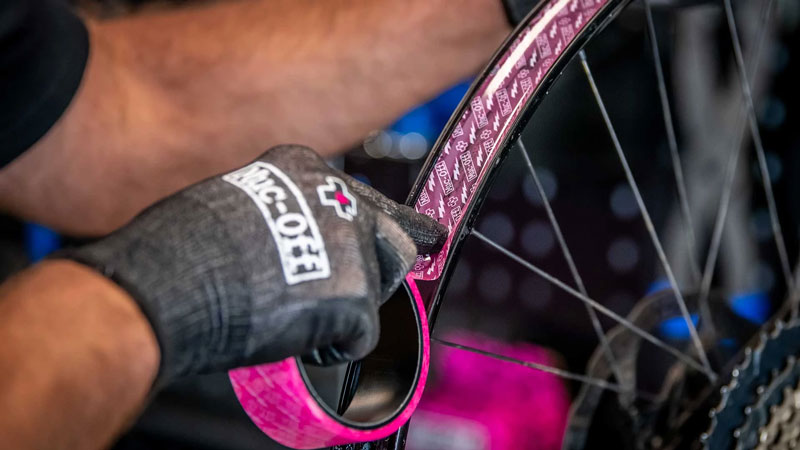 It is necessary to raise the car on a jack, unscrew the fasteners (it is better to twist a little in advance before lifting to a height) and remove the wheel. Next, the tire is lowered and the places where the tire touches the rim are pressed. As a result, the rubber will fall behind faster.
It is necessary to raise the car on a jack, unscrew the fasteners (it is better to twist a little in advance before lifting to a height) and remove the wheel. Next, the tire is lowered and the places where the tire touches the rim are pressed. As a result, the rubber will fall behind faster.
Important!
Wheel beading is carried out from the side opposite the spool, carefully moving forward along the rim. If there is no experience and professional tools, as at a tire fitting, then it will take about 40 minutes to remove one tire.
A prefabricated steel corner will help in separating the rim and rubber. It is carefully driven between the rim and the rubber. You should not press hard on the tool, as the material is still soft and can easily bend.
You must work very carefully and carefully. Mounting blades are often used by many drivers, as they help to carry out disassembly more accurately without affecting the integrity of the tire. The tire must be carefully removed from the metal. As soon as the side of the rubber is released, you can slowly take out the camera.
As soon as the side of the rubber is released, you can slowly take out the camera.
This completes the activities. Everyone now understands how to remove the tires from the disk with their own hands. It remains only to learn how to board the wheels. Very simple: a new tire is taken and placed on a car disk, the assembly is elementary - in the reverse order.
Impact breaking technology is used by drivers frequently. Do-it-yourself devices for disassembling a tire with this method are the same - a corner made of steel or 2 special blades. You will also need a jack and a sledgehammer.
The technique involves applying light blows with something heavy around the entire circumference of the wheel. This is a simple job that does not require skills, but it must be done carefully. If you have doubts about your own abilities, then you need to turn to professionals or experienced motorists, neighbors in the garage.
Semi-automatic wheel breaker
You can make your own machine tools. To create the frame part, which will be the basis, experts advise taking metal-profile pipes. Between them must be kept at least 700 mm.
To create the frame part, which will be the basis, experts advise taking metal-profile pipes. Between them must be kept at least 700 mm.
This interval is required for the equipment to be reliable.
Two tubes are arranged in parallel, welded with a steel angle. The profile of the smallest standard size is also suitable. As an additional component, adjustable legs can be built.
When the base is done, a tube must be attached to the frame part. Its radius is sufficient within 10-15 mm. Before welding, the flange part must be welded in advance at 400-600 mm from the floor. Vertically, you need to make fasteners, which are created in the form of a steel plate. It will be required to mount the device as a lever. The main purpose of the lever is to remove the rubber from the disk rim. The lever part is a pair of elements of the shoulder and paw, which acts on the rubber itself.
You can also disassemble the wheel in a garage with your own hands. The main thing is to do everything right and not to rush. Only by listening to the advice of experts, you can guarantee the success of the event to remove the tire from the wheel.
Only by listening to the advice of experts, you can guarantee the success of the event to remove the tire from the wheel.
Do you need to remove a car wheel to make other repairs? You've come to the right place, we are a team of ASE certified master mechanics who will show you the right way to remove a wheel (rim and tire) without hurting your back or stripping or breaking wheel studs and nuts. After Repair To finish you will put the tire back on the wheel hub or axle flange, that's where our guide 9 comes in0003
Many repairs on cars involve removing tires to access replacement parts, so it will need to be taken off and put on many times, it's a good idea to know how to do it right. The safety of yourself, family and friends depends on proper wheel fitting not to mention the damage that can happen to your car if a wheel falls off.
You will need the tools and supplies that can be found at your dad's or grandpa's garage. If not, it's a good idea to start your own toolbox so you can learn to be self-sufficient when repairing your car with 2CarPros and our guide to repair. We're here to help and answer any questions your car repair can be free of charge.
SPONSORED LINKS
Amazon is an excellent resource for many high quality parts and tools that you will need to save money over a lifetime of driving.
Let's get started
Before you start, you need to know how to lift and lift your car properly without damaging the chassis. This is important because if you don't set up your car correctly, you will do more harm than good, costing you more time and of money.
Before lifting the car up and off the ground you will need two blocks of wood to install on either side of the tire at the opposite end of the car being raised. This is because if you lift the car off the wheels that hold it in place (lead or emergency brake), the car can roll away if it's on a slight incline.
This is because if you lift the car off the wheels that hold it in place (lead or emergency brake), the car can roll away if it's on a slight incline.
In other words, if you have a rear wheel drive car and you move both rear wheels off the ground, the front wheel will allow the car to move because nothing is in the way, they roll freely. The rear wheels hold the car in place with the transmission in park or the emergency brake on.
SPONSORED LINKS
Start with the car on a level surface and then lift it up. This will stabilize the car while preparing the wheel for removal. There are usually two types of wheel caps that prevent lug nuts from being removed. The first is the full cap, which must be removed to gain access to the handpiece nuts.
Using a wrench on the back of the car or a large flat blade (standard) screwdriver wedges the tip between the cap and the tire rim. This will begin to release the grip on the cap's spring loaded clips that hold it to the inside of the rim.
Turn the wrench or screwdriver back and forth to aid in the removal process as you watch the cover around. Bypass the cap until it is completely removed to expose the lug nuts holding the bezel to the bearing hub or axle. The cap is made of plastic and can break if you are not gentle with it so take your time and pull it out easily.
SPONSORED LINKS
Here is an example of a lug nut cap on an aluminum wheel that has plastic covering them that must be removed to access. These plastic caps are made to resemble eye nuts and actually screw onto the metal ones that hold the rim on. Each of these must be removed before the center cover can be removed.
This is what it looks like after removing the center cover with the nuts behind it. This cover can also be held in place with a signal screw or a small bolt.
This type of wheel already has protruding nuts and is ready to be removed without any further preparation. You can find this style on alloy or aluminum wheels which are more drastic.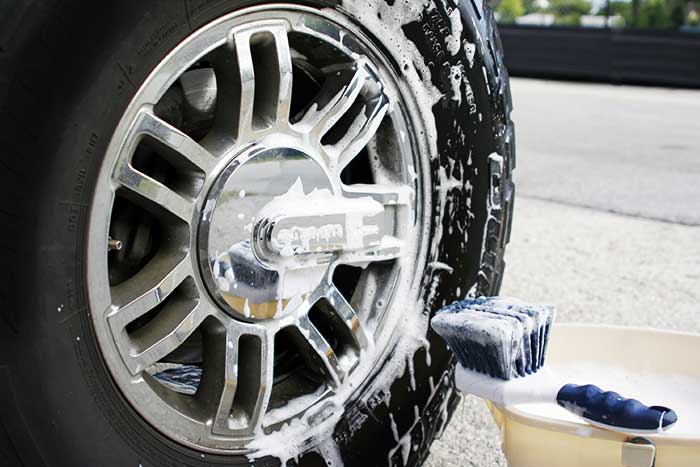 Some manufacturers have a wheel lock, which is usually inside the car, located in the glove box or in one of the side door compartments.
Some manufacturers have a wheel lock, which is usually inside the car, located in the glove box or in one of the side door compartments.
SPONSORED LINKS
This lock is a specialized socket that only fits the specific car it is designed for. If this lock is lost, you will need to contact the dealer and provide the VIN number to get a replacement.
The first step in removing the lug nuts is to get a tool capable of doing so. This could be the wrench that comes with the spare tire in most cars. If you can't find a spare, check your owner's manual, it should be in the trunk or glove box.
Most mechanics prefer to use a breaker, which is a large wrench socket that will give you extra leverage over a traditional wrench or socket and ratchet. This panel is usually not included in a typical toolbox and will need to be purchased separately with Kit 1 /2 holes Rosettes.
Wheel lug sizes in most cases can be 17 mm, 18 mm, 19 mm, 21 mm or 3/4 or 13/16. cases.
cases.
To remove the lug nuts, turn them counterclockwise. These nuts are going to be tight so be prepared one thing you never want to do is pull up on a wrench this will put pressure on your lower back and cause pain as the muscles stretch in a direction they are not used to. It delivers the pleasure of repair work.
SPONSORED LINKS
As long as the tire is still touching the ground, you are ready to smash the lugs to lose. The reason for this is that the tire will want to spin when you apply downward pressure to break the nuts and if they are on the ground it will be hard to keep it in place. You can "put" the jack in place and raise the car a little, this will allow the suspension to move down, but not enough to lift the tire off the ground.
While the tire touches the ground, apply downward pressure on the lug arm, keeping the pivot point steady. If the ears are very tight, try using your body weight and bouncing on this key. increase pressure exponentially.
Some lugs can get rusty or the mechanic who last tightened them Time lifted the impact wrench and they tightened up a lot. In this case, you may need to use full body weight and step on the jerk. Do make sure the toggle wrench or jumper is fully on the nuts to avoid rounding.
Be careful doing this because there's a lot more pressure and things like that can get out of control as the wrench flies off and hits you or someone else.
SPONSORED LINKS
Continue disassembling the lugs until they are all done and it has been rotated about one full turn in the air you will have no problem removing the nuts completely, do not completely remove the nuts at this time.
Now you can finish lifting the car until the tire is no longer in contact with the ground, in which case we use a hydraulic jack which is more stable than the scissor jack that comes with most cars. The car is then stabilized with a jack, never get hit by a car without these safety stands.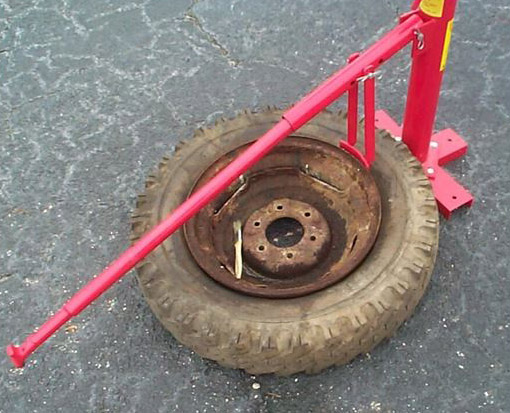
Now you can continue to remove all the mounting nuts by hand or using a wrench or a jumper. At this point you can even use a normal socket and a ratchet set up.
Note some European models such as Mercedes Benz, BMW and Porsche will use eye bolts which will allow the tire to fall off when removed because there is no wheel stud to hold the rim in place so be prepared to grab the tire.
SPONSORED LINKS
Once all the lugs are removed, the tire is loose, grab it and pull it out of the wheel studs. , do not hit the jack stands with the tire.
Now is a good time to inspect tire wear, also check tires for nails and cuts that could hinder its performance. If the tire needs to be replaced, the shop is the best place to go because removing the tire from the rim is difficult and requires a machine to do so in most cases.
Once the above repair has been completed, it is time to remount the tire and back on the car. Before doing this, it is recommended to check the threads on the wheel studs located on the axle flange, hub or rotor.
Before doing this, it is recommended to check the threads on the wheel studs located on the axle flange, hub or rotor.
You should also check the clamp nuts themselves and replace any that are damaged. Also wipe off any dirt or grease from the mounting surface before reinstalling the wheel.
SPONSORED LINKS
After successfully inspecting or repairing the vehicle, take the tire and install it carefully on the wheel studs so as not to damage the threads.
On some European vehicles you will need to hold the tire to the wheel hub and then try to align the rim with the threaded bolt holes before installing. You may need to move the rim to line up these holes. the bolts are already installed in the image below).
With the rim seated on the wheel studs, push the wheel until it rests against the rotor or drum flange. Install the lock nuts onto the studs by turning them clockwise. Do not start the lugs with a socket and ratchet, pneumatic tool, or electric impact gun, as this may twist the nut and ruin the stud and nut.
SPONSORED LINKS
Continue installing lug nuts until all are started, at least two turns. (Never use grease on the nuts, if there is rust on the wheels, use a wire brush to remove it before installation.)
Start initial tightening following the sprocket pattern. This will ensure the wheel is evenly tightened to avoid deformation of the rim, brake rotor, drum, hub or brake drum. You can use a regular ratchet and socket for this while holding the bar with your hand. In the next step, the wheel will be fully tightened.
Now lower the car until the tire touches the ground and hold it. from rotating while it is being tightened. Use a torque wrench and set it according to the manufacturer's specifications, which are usually 70 to 90 pounds for passenger cars, and 100 to 120 pounds for pickup trucks and large SUVs.
Done by tightening the star shaped eyelets, listening for the feel of the wrench to give and click the alarm the correct torque has been reached. If a torque wrench is not available, tighten the star lugs evenly, go around the lugs twice to make sure they are all tight.
If a torque wrench is not available, tighten the star lugs evenly, go around the lugs twice to make sure they are all tight.
SPONSORED LINKS
After the wheel is tight, reinstall the cap cap or nut. Some of these lids will have a notch or indentation timer that will sit in a suitable place in the frame. Full hub cap with relief for the valve stem, so pay attention and install it correctly. Be careful not to hit the cover too hard as it is plastic and it will break.
Once the job is done, listen for any strange sounds while driving. The free wheel will make clicking or ticking sounds when driving at low speeds. It's a good idea to recheck the nuts a day or two after driving to make sure they're secure. After installation is complete, check the air pressure in the tire, this will help the tire last long and perform best for years to come.
If you have a question about wheels and their installation or removal please visit our forum where our online community of mechanics and car enthusiasts will help you for free.
Article published on 2018-04-11
,
Your tires are an integral part of your car. They are there for safety, comfort and productivity. The tires are attached to the wheels, which in turn are attached to the car. Some vehicles have directional or position tires. Directional means that the tires are designed to rotate in one direction only, while positional means that the tires are only designed to fit on a certain side or a certain corner of the vehicle.
You may have received a flat tire and needed a replacement. You can remove your wheels to rotate your tires for maintenance. You may need to do other work, such as brake work or wheel bearing replacement.
Whatever the cause, knowing the correct way to remove and install wheels and tires will help prevent damage and put you out of action. When removing and installing wheels, there are a few key points to remember.
No matter what reason you are removing wheels and tires, it is important to have the right tools and safety equipment to prevent vehicle damage or injury.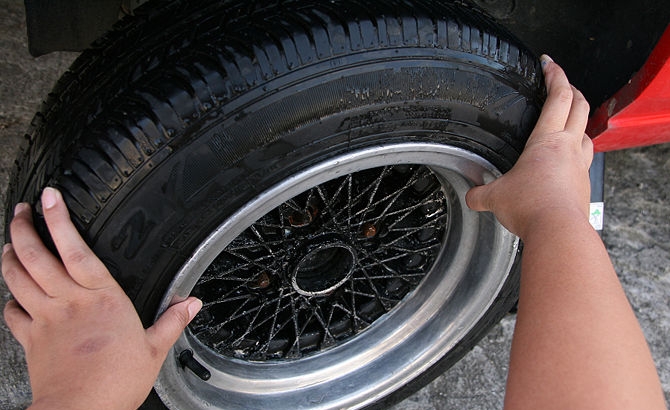
Materials Needed
Step 1: Park your vehicle . Park your vehicle on a level, firm and level surface. Apply the parking brake.
Step 2: Put the wheel chocks in place .Place the wheel chocks and tires, which must remain on the ground.
Step 3: Loosen the clamp nuts . Using a ratchet and socket or iron, loosen the lug nuts on the wheels, which need to be removed about ¼ turn.
Step 4. Raise the vehicle . Using a house jack, raise the vehicle to the manufacturer's recommended jacking point until the tire being removed is clear of the ground.
Step 5: Install jack stand . Place a stand under the jack and lower the vehicle onto the stand.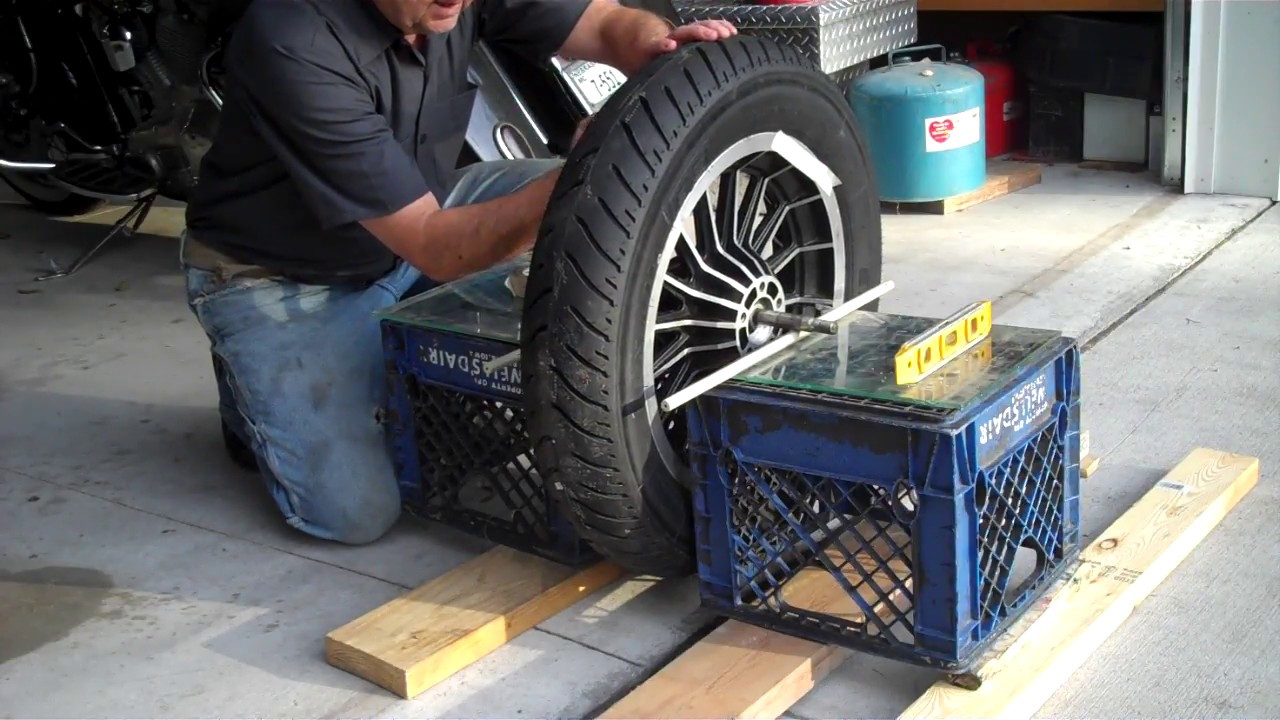
Tip . If you are removing more than one wheel and tire at the same time, you will need to lift one corner of the vehicle at a time. A jack stand must be installed on each corner of the vehicle being worked on.
Warning : Do not attempt to lift one side of the vehicle or the entire vehicle at the same time as damage or injury may result.
Step 6: Remove clamp nuts . Remove the lug nuts with a tire removal tool.
Step 7: Remove wheel and tire . Remove the wheel carefully and secure it in a safe place.
Some wheels may become corroded to the wheel hub and be difficult to remove. If this happens, use a rubber mallet and hit the back of the wheel until it loosens.

Step 1: Install the wheel back onto the studs. Install the wheel onto the lug studs.
Step 2: Install the lock nuts by hand. First install the flare nuts back on the wheel by hand.
Step 3: Tighten the star clamp nuts . Using a ratchet or iron, tighten the star lug nuts until they are snug.
This will help position the wheel correctly over the hub.
Step 4: Lower the vehicle to the ground . Once the wheel is secured, carefully return the vehicle to ground level.
Step 5. Make sure the clamp nuts have the correct torque . Tighten the clamp nuts to manufacturer's specifications using the starting pattern.
When removing and installing wheels and tires, it is very important to tighten the lug nuts using an alternating star pattern and torque them to specification. Failure to do so may result in the wheel coming off the vehicle while driving. If you are having trouble removing the wheels from the vehicle, or you think the problem is with the lug nuts, you should seek the assistance of a qualified mechanic who will assist you to tighten the nuts and make sure the wheel is installed correctly.
Failure to do so may result in the wheel coming off the vehicle while driving. If you are having trouble removing the wheels from the vehicle, or you think the problem is with the lug nuts, you should seek the assistance of a qualified mechanic who will assist you to tighten the nuts and make sure the wheel is installed correctly.
,
When you have beautiful new rims on your car, you won't be the only one to admire them. Beautiful wheels attract the attention of car lovers and thieves alike.
Wheels are an easy sign for thieves. When you leave your car parked anywhere, a thief can remove your wheels with a simple set of tools like a wrench and a floor jack. In just a few minutes, they can get rid of your wheels and tires, leaving you with thousands of dollars out of their pocket.
Wheel lock or lock nuts can be fitted to prevent wheel theft. A lock nut or wheel stud is installed in place of one of your original wheel nuts or studs on each wheel. The new lock nut is an irregular shape that only fits the wheel lock key. The wheel lock must only be tightened and released with the special wheel lock wrench, so a standard socket wrench or countersunk wrench will not be able to release the wheel locks.
The new lock nut is an irregular shape that only fits the wheel lock key. The wheel lock must only be tightened and released with the special wheel lock wrench, so a standard socket wrench or countersunk wrench will not be able to release the wheel locks.
How do you remove the wheel locks from your car? What happens if your wheel lock key breaks or is lost? Follow these instructions to remove wheel locks from your vehicle.
Materials needed
wrench for your vehicle
Step 1. Make sure your vehicle is in park . Engage the parking brake for added safety.
Step 2: Align wrench with nut . Align the splines on the wheel lock key and the wheel lock on the wheel.
Align the splines on the wheel lock key and the wheel lock on the wheel.
This is achieved by placing the wheel lock key on the wheel lock and turning it slowly until the lugs or structure align. The wheel lock key will snap into place on the wheel lock.
Step 3: Place wrench with clamp nut on wheel lock wrench . This is a six point hex head and should match the size of your vehicle's wheel nuts.
Step 4: Turn the clamping nut wrench counterclockwise . This will loosen the wheel lock and may require significant force to loosen the wheel lock from the wheel.
Step 5: Disengage the wheel lock manually . After loosening the wheel lock, you can easily release the wheel lock manually.
If you are reinstalling the wheel lock, reverse this procedure.
Required materials
In this procedure, you will use a universal wheel lock release tool to remove a wheel lock. This will most likely damage the wheel lock that you cannot reuse. Make sure you don't have the wheel lock key before using the universal kit.
This will most likely damage the wheel lock that you cannot reuse. Make sure you don't have the wheel lock key before using the universal kit.
Step 1: Park the car . Turn the car on in park and apply the parking brake.
This prevents rotational movement when you try to loosen the wheel lock.
Step 2: Locate the right wheel lock release tool . Perform a trial installation of the tool on top of the wheel lock to be removed.
It should fit snugly and the teeth on the inside of the removal socket should cut into the wheel lock.
Step 3: Hit the tool with hammer . Hit the end of the wheel lock release tool hard with a rubber mallet.
You need the wheel lock release tool to be securely attached to the wheel lock. The teeth inside the wheel lock release tool now cut into the wheel lock itself.
Step 4: Loosen the wheel lock . Loosen the wheel lock by turning the removal tool counterclockwise with a wrench.
Expect considerable effort to loosen wheel locks.
Step 5: Manual turn completion . After loosening the wheel lock, you can completely disengage it manually.
The wheel lock is stuck in the removal tool.
Step 6: Unlock tool . Insert a punch or screwdriver through the hole in the wheel lock release tool opposite the wheel lock and hit the hammer with a hammer.
After a few blows with a hammer, a damaged wheel lock will pop out.
Step 7: Repeat these steps for the remaining wheel locks . Perform the same process on any other wheel locks as needed.
If you are installing a new set of wheel locks, be sure to place the wheel lock key in a place where you can find it. The glove box, center console, or jack are good places for the wheel lock key.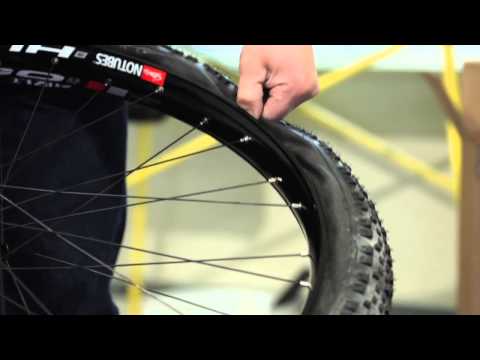 Thus, the process will be as simple as possible. If you think you need a wheel bearing replacement or need help tightening the lug nuts, contact one of YourMechanic's mobile technicians.
Thus, the process will be as simple as possible. If you think you need a wheel bearing replacement or need help tightening the lug nuts, contact one of YourMechanic's mobile technicians.
,
| The following users thanked (6): |
| brownie Kuzma |
| View profile |
| Send a private message to brownie Kuzma |
| Find More Posts by Brownie Kuzma |
| 12/31/2012, 18:27 | # 3 |